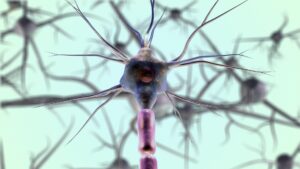loading...

by Tim Cassidy | Mar 10, 2025 | Educational
Introduction
Client-centered therapy thrives on understanding clients’ needs, and neuroscience can guide your approach. At Online CE Credits, we help therapists apply brain science to client care. Let’s explore how neuroscience enhances treatment planning and how you can earn CE credits to deepen your skills.
Neuroscience for Client-Centered Care
When you know what’s not going right in the brain, it gives you a starting point! If we can link brain functioning to specific symptoms (such as hypervigilance being linked to amygdala hyperactivation), then we can figure out which brain regions to target, and apply techniques shown to help those areas change in a positive direction. Here’s a short outline to help you get started:
Practical Steps for Treatment Planning

- Link Symptoms to Brain Changes: Identify client behaviors (e.g., PTSD dissociation, anxiety vigilance) and connect them to regions like the insula (hypoactive in PTSD) or amygdala (hyperactive in anxiety).
- Select Brain-Based Therapies: Use EMDR or other exposure-based therapies to promote desensitization and reduce amygdala activation, per Bergmann (2008), or CBT to regulate the amygdala in anxiety, per Furmark et al. (2002).
- Monitor Progress: Assess symptom changes (e.g., reduced re-experiencing) as brain-based therapies take effect, per Yoon et al. (2017), ensuring client-centered care. You can do this by administering self-report tools such as the BAI, BDI-II, PCL-5, and many others! This neuroscience-driven framework ensures tailored interventions for clients.
Earn CE Credits with Online CE Credits
At Online CE Credits, several of our NBCC- and ASWB-approved courses teach you how to leverage brain science for client-centered care. With over 250 on-demand courses, you can earn credits 24/7. Visit onlinececredits.com to try our free ethics course or sign up for unlimited access by becoming a member!
Conclusion
Neuroscience enhances client-centered therapy by linking brain changes to symptoms and treatments. Apply these insights with Online CE Credits at onlinececredits.com and join 40,000+ professionals in elevating your practice. Start now!

by Tim Cassidy | Mar 10, 2025 | Educational
Understanding EMDR 3.0: NDIT: The Future of Trauma Therapy
Neural Desensitization and Integration Training (NDIT) is transforming the way mental health professionals approach trauma treatment. This module-based, trauma-focused exposure therapy is designed to help clients recover from trauma and complex trauma by leveraging the latest in neuroscience, memory reconsolidation, and nervous system regulation.
Unlike rigid, prescriptive therapeutic methods, NDIT is flexible and adaptable, allowing therapists to customize treatment plans based on the unique needs of each client. This innovative approach integrates elements from EMDR, Prolonged Exposure, Cognitive Processing Therapy, and somatic therapies, making it one of the most comprehensive trauma treatment models available today.

How NDIT Works: The Five Core Modules
NDIT follows a structured five-module approach, adapted from the Trauma Treatment Roadmap (Sweeton, 2019), to guide clinicians in facilitating deep and lasting healing:
✅ Building the Alliance – Establishing trust and safety in the therapeutic relationship.
✅ Reconnecting with the Body – Helping clients become aware of and regulate their physiological responses.
✅ Regulating the Stress Response – Teaching self-regulation techniques to reduce anxiety and hyperarousal.
✅ Strengthening the Mind – Enhancing cognitive flexibility and emotional resilience.
✅ Processing Trauma – Using targeted interventions to promote neural integration and trauma resolution.
Each of these steps is grounded in cutting-edge neuroscience, focusing on healing the five major brain regions impacted by trauma:
🧠 Amygdala – Reducing fear and hypervigilance.
🧠 Hippocampus – Improving memory processing and integration.
🧠 Insula – Enhancing body awareness and emotional regulation.
🧠 Cingulate Cortex – Strengthening attention control and emotional flexibility.
🧠 Prefrontal Cortex – Supporting logical thinking, self-awareness, and decision-making.
By following this structured roadmap, clinicians can help clients retrain their nervous system, reprocess traumatic experiences, and rebuild a sense of safety and empowerment.
Why Choose NDIT?
1️ Evidence-Informed – Rooted in neuroscience and memory reconsolidation research.
2️ Flexible & Integrative – Easily blends with other trauma therapies.
3️ Practical & Effective – Provides structured modules to guide therapists step by step, while also remaining flexible.
4️ Trauma-Informed – Focuses on nervous system regulation, attachment, and resilience.
Are you ready to revolutionize your trauma treatment approach?
Explore NDIT training options and start making a deeper impact with your clients today!
📌 Learn more & enroll in an NDIT course today at OnlineCECredits.com.

by Tim Cassidy | Mar 10, 2025 | Educational
How Trauma Rewires the Brain – And How NDIT Helps Reverse It
When a person experiences trauma, their brain undergoes structural and functional changes that impact their emotions, memory, and ability to feel safe. Traditional talk therapy alone often struggles to fully address these deep-seated neurological effects.
This is where Neural Desensitization and Integration Training (NDIT) comes in. By leveraging neuroscience-based interventions, NDIT helps clients reprocess trauma, regulate their nervous system, and rebuild neural pathways for resilience.
The 5 Key Brain Areas Impacted by Trauma
Trauma doesn’t just affect emotions—it physically alters the brain. Here’s how:
🔺 Amygdala (“The Alarm System”) – Becomes overactive, leading to fear, hypervigilance, and emotional reactivity.
🔺 Hippocampus (“The Memory Center”) – Becomes underactive, impairing memory processing and emotional integration.
🔺 Insula (“The Body Awareness Center”) – Becomes dysregulated, leading to difficulty feeling or interpreting bodily sensations.
🔺 Cingulate Cortex (“The Emotional Regulator”) – Weakens, reducing the ability to self-soothe and manage emotions.
🔺 Prefrontal Cortex (“The Logical Thinker”) – Shrinks or becomes underactive, making it harder to think rationally and feel in control.
These brain changes explain why trauma survivors may struggle with emotional regulation, intrusive memories, and heightened stress responses.

How NDIT Helps Rewire the Brain
NDIT uses a combination of bottom-up, top-down, and horizontal interventions to promote neuroplasticity and restore balance to the brain.
✔ Bottom-Up Techniques – Engage the body to change the brain (e.g., breathwork, movement, yoga, vagus nerve activation).
✔ Top-Down Techniques – Engage thoughts to change the brain (e.g., cognitive restructuring, mindfulness, guided imagery).
✔ Horizontal Techniques – Integrate both hemispheres (e.g., bilateral stimulation, EMDR-inspired techniques, art therapy).
By combining these approaches, NDIT strengthens neural pathways that support resilience, calm, and emotional balance.
Practical Techniques Clinicians Can Use Today
Want to start incorporating NDIT-inspired techniques into your practice? Try these:
🔹 Co-Regulation Exercises – Use eye contact, mirroring, and grounding techniques to build safety.
🔹 Vagus Nerve Stimulation – Teach diaphragmatic breathing and progressive muscle relaxation to reduce stress.
🔹 Memory Reconsolidation Strategies – Guide clients through safe trauma recall paired with positive sensory input.
🔹 Mind-Body Integration – Use somatic tracking, movement therapy, and sensory grounding to reconnect clients with their bodies.
Start Learning NDIT Today!
Whether you’re an experienced trauma therapist or new to trauma work, NDIT provides a powerful, science-backed framework for helping clients heal.
📌 Ready to expand your trauma therapy skills?
Explore NDIT courses now at OnlineCECredits.com and take your practice to the next level!

by Tim Cassidy | Mar 10, 2025 | Educational
The Limitations of Traditional Trauma Therapy
For decades, trauma therapy has relied on methods like talk therapy, CBT, and exposure therapy. While these approaches help many clients, they often fall short when treating deep-rooted trauma.
Many trauma survivors experience:
🚫 Emotional flooding during exposure therapy
🚫 Dissociation or shutdown when discussing traumatic memories
🚫 Limited progress with cognitive-only interventions
🚫 Body disconnect due to unresolved physiological responses
Traditional methods often don’t fully address the brain-body connection, which is critical for trauma healing. This is where Neural Desensitization and Integration Training (NDIT) stands out.
How NDIT is Changing Trauma Treatment
NDIT is a science-backed, integrative approach that leverages neuroscience, exposure therapy, and somatic interventions to heal trauma more effectively.

Unlike conventional models, NDIT is:
✅ Flexible – Adaptable to each client’s unique trauma history
✅ Neuroscience-Based – Targets memory reconsolidation, fear extinction, and nervous system regulation
✅ Integrative – Combines elements from EMDR, Prolonged Exposure, Somatic Therapy, IFS, and Cognitive Processing Therapy
✅ Client-Centered – Designed to reduce overwhelm and emotional shutdown
By focusing on both the brain and body, NDIT helps clients process trauma without feeling retraumatized.
How NDIT Helps Fill in the Gaps
| Traditional Trauma Therapy |
NDIT |
| Overwhelms the nervous system with exposure techniques |
Uses titrated exposure to prevent emotional flooding |
| Cognitive-heavy, lacks body integration |
Incorporates body-based techniques like vagus nerve activation |
| Rigid structure, limited flexibility |
Modular design allows therapists to tailor treatment |
| Slower progress for some clients |
Accelerates trauma healing through multi-layered interventions |
By integrating NDIT, clinicians can help clients process trauma more efficiently while reducing emotional distress.
Who Should Consider NDIT Training?
✅ Therapists working with complex trauma & PTSD
✅ Clinicians seeking brain-based interventions
✅ EMDR, CBT, or somatic therapists wanting an integrative model
✅ Mental health professionals looking to increase treatment effectiveness
If you want to help your clients achieve deeper healing in a safer, more structured way, it’s time to explore NDIT training.
📌 Get started with NDIT today at OnlineCECredits.com

by Tim Cassidy | Oct 21, 2024 | Educational
Training in counseling supervision can be a game-changer for your career, whether you’re an experienced practitioner looking to enhance your supervisory skills or a budding therapist becoming a supervisor.
Counseling supervision upgrades your clinical skills, helps colleagues understand their strengths and weaknesses, and helps identify performance issues before they become problems.
In this post, we look at the role of supervision in counseling, why you need specialized training, and the subjects under this program.
What Is Counseling Supervision?
Counseling supervision is when a therapist uses the services of another psychotherapy professional trained in supervision to review their work with clients and their professional and personal development. The supervisor offers professional service as a consultant, not as a boss.
According to the American Counseling Association, a counselor supervisor should have the qualities below:
- Grounded in theoretical and pedagogical foundations for their work
- Understand supervision models
- Should conduct a fair, accurate, and honest assessment of the professional clinical work of counselors and counselors-in-training
What Are the Objectives of Supervision in Counseling?
Supervision in counseling serves multiple vital functions. It ensures clients receive the highest standard of care while simultaneously supporting the therapist’s professional development.
Supervision allows therapists to reflect on their practice, receive feedback, and explore complex cases collaboratively and safely. This process helps identify blind spots, improve therapeutic techniques, and maintain ethical standards.

Also, counseling supervision promotes self-care among mental health professionals. This is because therapy involves a lot of emotions that can lead to burnout if not managed properly. As a result, regular supervision lets practitioners express their professional concerns, process challenging emotions, and develop resilience.
Ultimately, it creates a supportive environment where clinicians can explore their feelings, creating a sustainable and healthy practice.
Why Specialized Training Matters
Formal training in counseling supervision equips practitioners with advanced techniques and expert knowledge. It focuses on the nuances of the supervisory relationship, ethical considerations, multicultural competence, and effective communication strategies.
Structured training programs can refine your skills, build confidence, and ultimately help you provide high-quality supervision.
Because formal training emphasizes evidence-based practices, it uses new research and theories to provide up-to-date information. As a result, it keeps supervisors aware of the latest developments, providing them with current knowledge. And this enhances the overall quality of care provided to clients.
What Are the Key Elements of Counseling Supervision Training?
Training programs under counseling supervision zero in on several essential topics. They include theoretical knowledge, ethical and legal considerations, multicultural competence, communication, and feedback.
Now let’s look at each of these in detail.
Theoretical Foundations
An effective supervisor must possess robust theoretical knowledge.
Counseling supervision training introduces various models and theories to guide the supervisory process. These frameworks provide a structured approach to supervision. They help supervisors navigate complex situations and tailor their approach to the supervisee’s needs.
Some common theories include developmental models, which focus on the supervisor’s growth and progression. And integrative models combine elements from different theoretical approaches to create a flexible and adaptive supervisory style.
Understanding these theories allows you to create a supportive and effective learning environment, promoting the supervisee’s professional growth.
Ethical and Legal Considerations
Ethical practice is the bedrock of effective supervision. Training programs emphasize ethical standards, confidentiality, dual relationships, and informed consent. Supervisors learn to manage ethical dilemmas to empower them to maintain the highest professional standards.
Additionally, understanding the legal aspects of supervision is crucial. Training covers relevant laws and regulations, equipping supervisors with the knowledge to handle legal issues that may arise in their practice.
Supervisors who understand ethical and legal considerations can provide safe and ethical supervision for both supervisees and clients.
Multicultural Competence
Cultural competence is essential for effective supervision in our diverse society. Counseling supervision training focuses on multicultural competence. It explores how cultural factors influence the supervisory relationship. Supervisors learn to recognize and address cultural differences, promoting an inclusive and respectful environment.
As a result, it helps supervisors understand the supervisee’s unique experiences and challenges. By developing cultural competence, you can provide more effective support. And this improves the quality of the supervisory relationship.
Communication and Feedback
Clear and constructive communication is a cornerstone of effective supervision. Training programs focus on developing advanced communication skills. They teach supervisors how to provide supportive and constructive feedback.
Effective communication produces a collaborative relationship and encourages a supervisee to engage openly and honestly in the supervisory process.
Training also covers techniques to deliver difficult feedback, helping you address performance issues to promote growth and development. You can create a positive and productive supervisory relationship by mastering effective communication skills.
What Are The Benefits of Online Counseling Supervision Training?
Online counseling supervision training offers a flexible and accessible option for busy professionals. Internet programs provide the same high-quality training as in-person courses, as you can study from anywhere. This flexibility allows you to fit training into your existing commitments.

Online training programs may incorporate interactive elements, such as live webinars, discussion forums, and virtual role-plays. This creates an engaging and dynamic learning experience. They also build a sense of community and support, letting you connect with peers and instructors worldwide.
Additionally, online training provides access to a wealth of resources. They include recorded lectures, reading materials, and practical exercises. This approach gives you the necessary tools to develop your supervisory skills, advancing your professional competence and confidence.
How To Choose the Right Training Program
When selecting a counseling supervision training program, consider several factors below:
Here are some key considerations:
Accreditation and Credentials
Choose an accredited program from a recognized professional body. Accreditation shows the training meets established quality standards and that the program is reputable.
In addition, look for courses offering credentials or certification upon completion, as these can boost your professional standing and credibility.
Curriculum and Content
Review the curriculum to ensure it covers all the key components of effective supervision. Consider programs that dive into theoretical foundations, ethical and legal considerations, multicultural competence, and communication skills.
The curriculum should provide practical, hands-on learning experiences, enabling you to apply the skills and knowledge in real-world settings.
Instructor Expertise
The instructor’s expertise influences the quality of the training program. As a result, pick a program from experienced and knowledgeable professionals with a strong background in supervision. Instructors should provide practical insights and guidance from their own experiences to enhance learning.
Learning Format and Flexibility
Consider your own learning preferences and schedule when selecting a program. Online training offers flexibility and convenience, helping you study at your own pace and on your own schedule.
However, some individuals may prefer the structure and interaction of in-person training. Choose a format that aligns with your learning style and professional commitments.
Upskill Yourself in Emerging Trends in Counseling Courses
Statista reports that about 56 million adult Americans received therapy or counseling for their mental health in 2022. And anxiety and depression are the most common reasons to seek mental health treatment.
As a result, Online CE Credits provides the latest courses for continuing education in mental health treatment. The accredited and nationally approved online programs enable you to study at your own pace and interact with reputable practitioners. Also, they explore various treatments in psychotherapy to manage anxiety, depression, complex trauma, and more.
Here are examples of counseling courses:
Discover more insightful information on reintegration therapy for broken families.
Upgrade Your Profession in Counseling Provision
Counseling supervision training is a wise investment in your professional development. It provides the knowledge, skills, and confidence needed for effective supervision and quality care for clients.
Whether you’re an experienced supervisor or a beginner, specialized training offers the tools and insights to elevate your practice to new heights. Training in supervision lets you stay at the forefront of best practices. And it helps you provide the highest standard of support to your supervisors.
Partner with Online CE Credits for Continuing Education
Enrolling in continuing professional development is as easy as ABC with Online CE Credits. You have the option of paying once annually or taking on a cost-effective membership plan. And the certification is available to show your credits and progress to your employer or in your private practice.
Also, the learning platform has a refund and exchange policy, which you may not need because of the high-quality courses we offer. Stop feeling stuck at your current skill level. Get advanced training and certifications to level up your career.

by Tim Cassidy | Oct 20, 2024 | Educational
Marriage and Family Therapists (MFTs) deal with some of the most sensitive and complex issues individuals and families face. As such, staying up-to-date with ethical guidelines is not just an obligation—it’s a core part of being an effective and compassionate therapist. Ethics in therapy isn’t just a set of rules, but a living part of practice, requiring continuous reflection and learning.
For MFTs, continuing education on ethics is vital. It keeps them aligned with the profession’s ever-changing legal, cultural, and clinical landscape. But what does that really look like in practice? How do therapists ensure they’re making ethical decisions, especially in difficult or unclear situations? This post will walk through the key aspects of ethics training and why ongoing education matters so much in this field.
Ethical Competence is a Skill

Many MFTs remember their early exposure to the *American Association for Marriage and Family Therapy (AAMFT) Code of Ethics* during their training. But simply knowing the rules isn’t enough. Ethical competence is more like a skill—a muscle you need to strengthen through practice and feedback. The ethical guidelines set the foundation, but real-world therapy sessions test your ability to apply them.
Consider a common dilemma: You’re treating a couple and one spouse discloses something sensitive to you in a private session. They ask you to keep it secret from their partner. Now, what do you do? Balancing confidentiality with transparency in couples therapy can be tricky. Without regular reflection on your ethical obligations and how they apply in these situations, it’s easy to make decisions that might feel right in the moment but don’t align with best practices.
Continuing education courses on ethics offer practical tools for navigating these gray areas. Experienced instructors often share real-life scenarios that give MFTs the chance to think through potential choices and their consequences. This active, scenario-based learning is often one of the most beneficial parts of ethics training, because it builds that all-important ethical reflex.
Understanding Legal and Cultural Shifts
Therapists are not just bound by ethical codes, but by legal standards as well, which can vary from state to state. And these laws don’t remain static. Consider changes in teletherapy regulations, confidentiality rules regarding minors, or the duty to warn in cases of imminent harm. These are all areas where laws have shifted significantly in recent years, and without updated training, MFTs could unknowingly fall out of compliance.
Additionally, the cultural climate continues to evolve, influencing everything from language use to client expectations. For instance, ethical guidelines now emphasize cultural competence and sensitivity in therapy. Therapists must be well-versed in issues like racism, gender identity, and socioeconomic disparities, which are integral to providing equitable care. Continuing education provides MFTs with updated resources on how to adapt their practice in these areas, ensuring that therapy is both legally sound and culturally attuned.
Boundary Management in a Digital Age
In today’s world, managing boundaries between therapist and client is more complicated than ever. With clients potentially following their therapists on social media or texting for scheduling, the line between professional and personal can get blurry. How much should you share with clients online? What’s your responsibility if a client comments on your public post?
These might not have been issues when many seasoned therapists first started practicing, but they’re now central to ethical decision-making. Online interactions are part of the modern therapist-client dynamic, and MFTs need updated training to navigate them ethically.
Continuing education courses on ethics often explore these kinds of digital dilemmas, helping MFTs develop policies around client communication, self-disclosure, and digital boundaries. These courses also offer tools to address situations where digital interactions have already crossed into uncomfortable territory, without damaging the therapeutic relationship.
Preventing Burnout through Ethical Practice
Burnout among therapists is a well-documented issue, and it often results from unclear boundaries, overwhelming caseloads, or the emotional weight of the work. But here’s where ethics play an interesting role: Ethical practice isn’t just about protecting the client—it protects the therapist, too.
Consider an MFT who feels obliged to take on more clients than they can manage, or who struggles with saying “no” to a client who asks for extra sessions outside of working hours. While the therapist may believe they are being helpful, they could be unknowingly harming both their practice and their well-being. Ethics courses often emphasize self-care and professional boundaries, reminding therapists that it’s not just okay to protect their time and energy—it’s essential for providing high-quality care. By adhering to ethical guidelines that prioritize manageable workloads and clear boundaries, therapists can avoid burnout and maintain their passion for helping others.
This emphasis on ethical boundaries also helps therapists manage difficult client situations without taking on unnecessary emotional burdens. For instance, knowing when to refer a client to another professional or setting limits on communication outside of sessions isn’t just about following the rules—it’s about sustaining a healthy professional life that allows the therapist to be fully present during sessions.
Confidentiality and Its Complexities
Confidentiality is a cornerstone of therapy, but it’s not always as straightforward as it seems. Every therapist understands the importance of protecting client information, but there are situations where confidentiality can become complicated.
One challenge is navigating the exceptions to confidentiality, such as when a client is a danger to themselves or others. While most therapists understand their duty to report in such situations, there are often nuanced details that can be confusing. What qualifies as an immediate threat? How do you navigate mandatory reporting laws that vary by state? This is where ongoing ethics education plays a crucial role.
Therapists also face challenges with confidentiality when working with multiple clients, such as in family therapy or couples therapy. Who has the right to confidentiality when multiple people are involved? What do you do when one family member discloses something that could impact the therapy of the entire group? Without regular refreshers and discussions on how to handle these tricky scenarios, therapists could make decisions that put them at legal risk or harm the therapeutic process.
Ethical Decision-Making Models
One valuable tool that MFTs can take away from ethics continuing education is a decision-making model. These models help therapists methodically approach ethical dilemmas, ensuring they consider all relevant factors before making a choice. It’s easy to get caught up in the urgency of a situation or be swayed by emotion when faced with a difficult decision, but decision-making models provide a structured way to step back and evaluate the best course of action.
For example, a widely taught ethical decision-making process might involve identifying the problem, considering relevant laws and ethical guidelines, consulting with colleagues or supervisors, evaluating potential actions, and then choosing the course that minimizes harm while maintaining ethical integrity. While this may sound simple, practicing these steps in the context of real-world scenarios helps therapists build confidence in their ability to handle complex cases with professionalism.
Ethics courses often present case studies or hypothetical scenarios where therapists can apply these models, helping them feel more prepared when similar issues arise in their own practice. The goal isn’t just to follow the rules, but to develop an ethical mindset that becomes second nature in every aspect of their work.
Informed Consent and Client Autonomy
Another critical topic covered in continuing education on ethics is the concept of informed consent and respecting client autonomy. At the heart of this principle is the idea that clients have the right to make informed decisions about their therapy, including what types of treatment they receive, what information they share, and how long they engage in therapy.
However, informed consent is an ongoing process, not a one-time event. It’s not just about having a client sign a document at the start of therapy, but about continuously ensuring that clients understand their treatment, the potential risks, and their right to withdraw from therapy at any time.

This is particularly important when introducing new techniques or approaches in therapy. MFTs must be transparent about what these methods involve, why they’re being suggested, and what the client can expect. Regular training on ethics helps therapists stay sharp in how they present options to clients, ensuring that autonomy is always respected.
Moreover, clients from different cultural or linguistic backgrounds may have varied expectations around therapy, which can complicate the informed consent process. Continuing education often includes strategies for communicating clearly with clients from diverse backgrounds, ensuring that they fully understand their rights and the therapy they are receiving.
The Importance of Peer Consultation
No therapist should navigate ethical dilemmas alone. Peer consultation is a critical element of ethical practice, and it’s something that is strongly emphasized in many continuing education programs. Discussing difficult cases with colleagues not only helps MFTs gain new perspectives, but it also creates a supportive environment where therapists can reflect on their practice without fear of judgment.
Ethics courses often encourage therapists to establish regular consultation groups or seek supervision when facing particularly challenging situations. It’s a reminder that ethical practice isn’t about having all the answers yourself—it’s about being part of a larger professional community that helps guide your decisions.
Many therapists find that through consultation, they not only resolve ethical dilemmas more effectively but also build stronger professional relationships that can provide ongoing support throughout their careers. Ethics education helps normalize this process, encouraging therapists to seek help when needed and to offer their own insights to peers facing similar challenges.
Ethics as a Lifelong Commitment
For MFTs, ethical practice is not a box to check off—it’s a lifelong commitment. It’s about constantly growing as a professional, staying updated on new developments, and refining one’s approach to complex situations. Regular continuing education on ethics isn’t just a requirement; it’s a crucial investment in the quality of care therapists provide.
By engaging in ongoing learning, therapists ensure that they’re not only protecting themselves from legal pitfalls but also offering the highest possible standard of care to their clients. Ethics is woven into every interaction, every decision, and every relationship that therapists build. And as the field continues to evolve, so too must the ethical standards that guide it. Continuing education keeps therapists at the forefront of these changes, ensuring that their practice remains ethical, effective, and compassionate.













